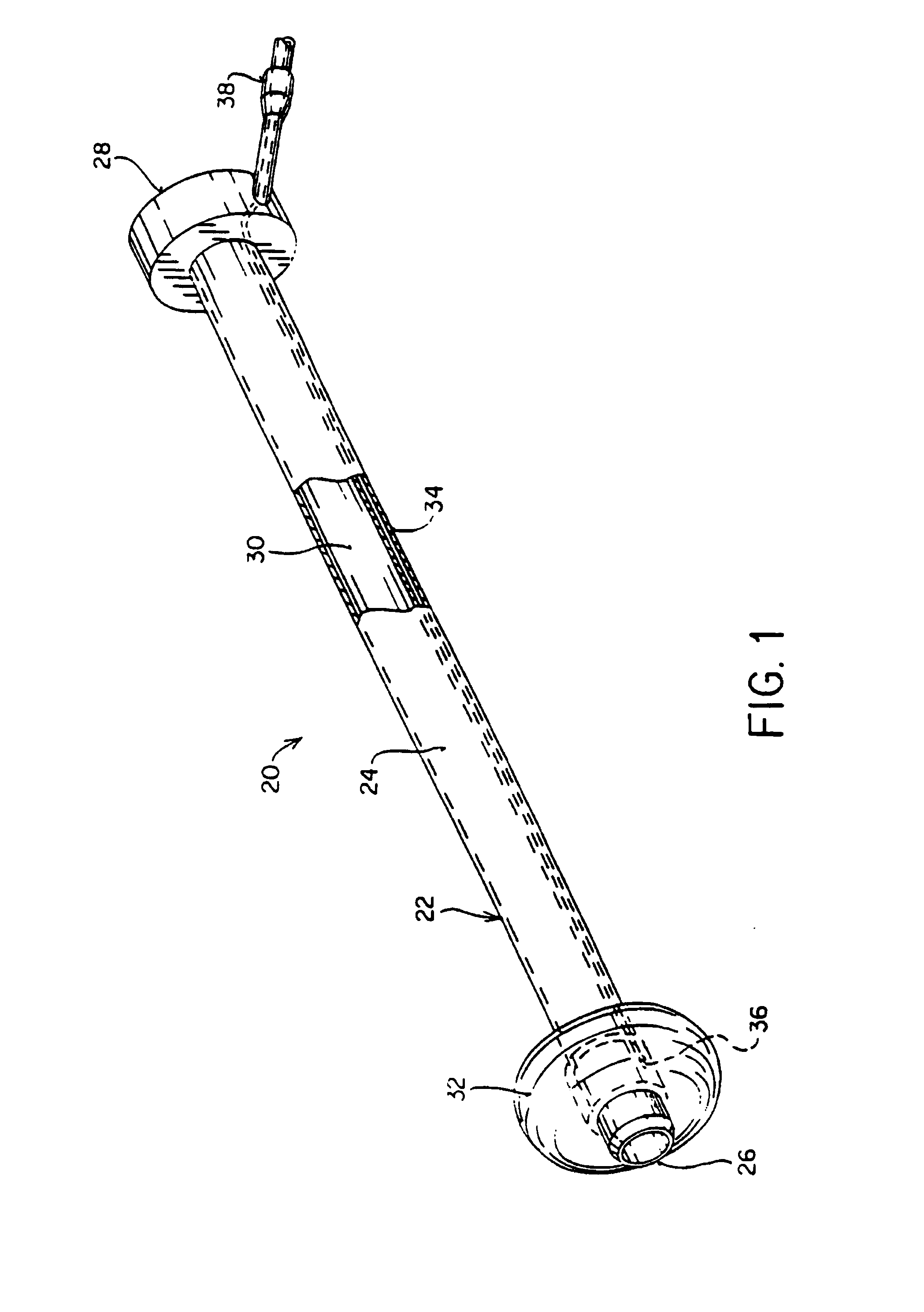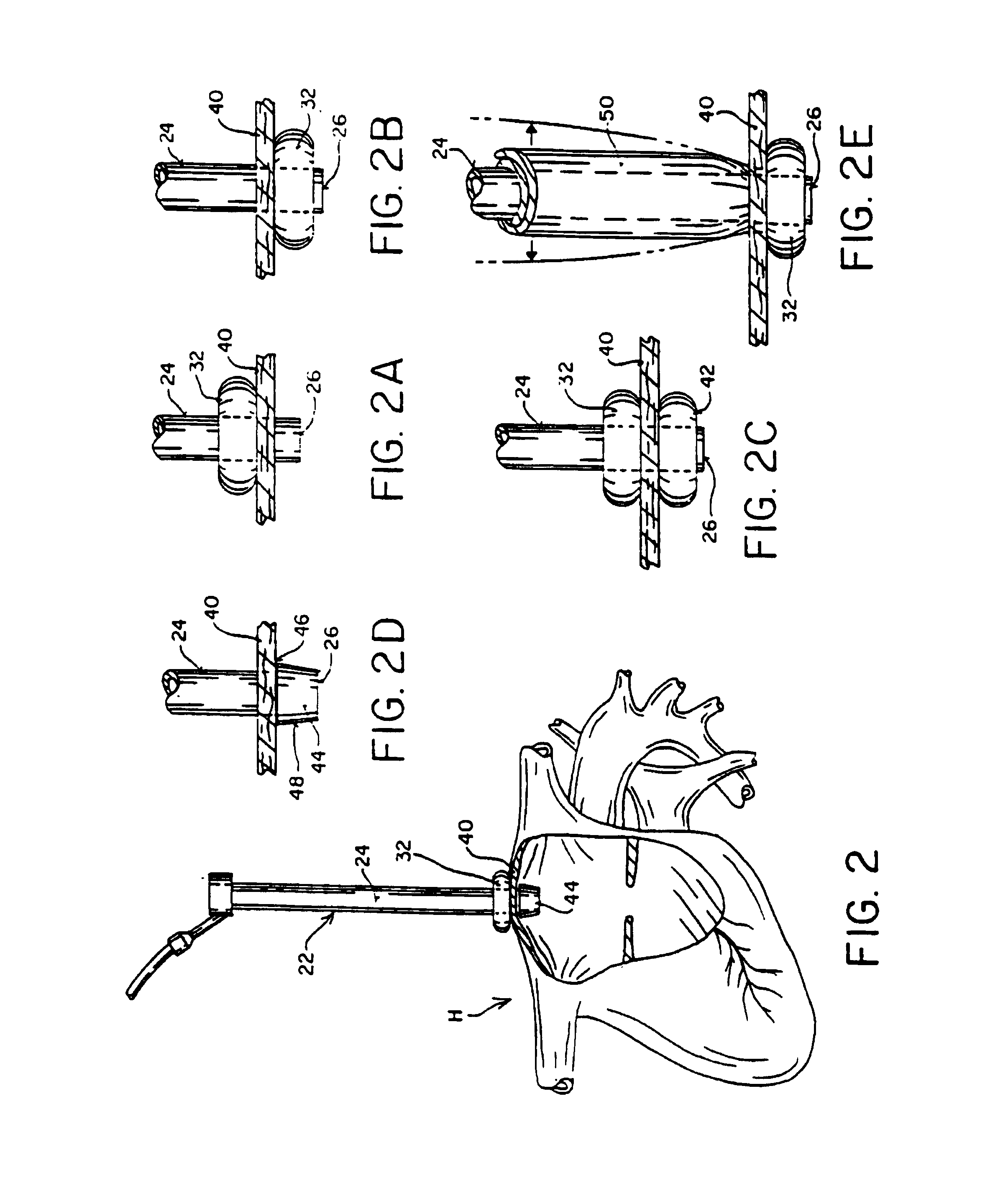Method of Forming a Lesion in Heart Tissue
a heart tissue and tissue technology, applied in the field of thoracoscopic surgery of the cardiovascular system, can solve the problems of abnormal enlargement of the right chamber of the heart, abnormal enlargement of the body tissue supplied by the blood supply, and abnormal shunting of blood
- Summary
- Abstract
- Description
- Claims
- Application Information
AI Technical Summary
Benefits of technology
Problems solved by technology
Method used
Image
Examples
Embodiment Construction
[0083]A first representative embodiment of an intracardiac access system according to the invention is illustrated in FIG. 1. The intracardiac access system 20 includes a tubular access device 22 comprising a rigid shaft 24 having a distal end 26, a proximal end 28, and an inner lumen 30 extending therebetween. Access device 22 includes a means near distal end 26 for hemostatically sealing a cardiac penetration through which shaft 24 is introduced, which may comprise a toroidal balloon 32. An inflation lumen 34 extends through shaft 24 and has an opening 36 in communication with the interior of balloon 32. An inflation fluid port 38 is mounted to shaft 24 at proximal end 28 in communication with inflation lumen 34 and is configured for connection to an inflation fluid delivery source such as a syringe or other balloon inflation device.
[0084]Access device 22 is configured to extend percutaneously through an intercostal space and through a muscular wall of the heart with distal end 26...
PUM
 Login to View More
Login to View More Abstract
Description
Claims
Application Information
 Login to View More
Login to View More - R&D
- Intellectual Property
- Life Sciences
- Materials
- Tech Scout
- Unparalleled Data Quality
- Higher Quality Content
- 60% Fewer Hallucinations
Browse by: Latest US Patents, China's latest patents, Technical Efficacy Thesaurus, Application Domain, Technology Topic, Popular Technical Reports.
© 2025 PatSnap. All rights reserved.Legal|Privacy policy|Modern Slavery Act Transparency Statement|Sitemap|About US| Contact US: help@patsnap.com



